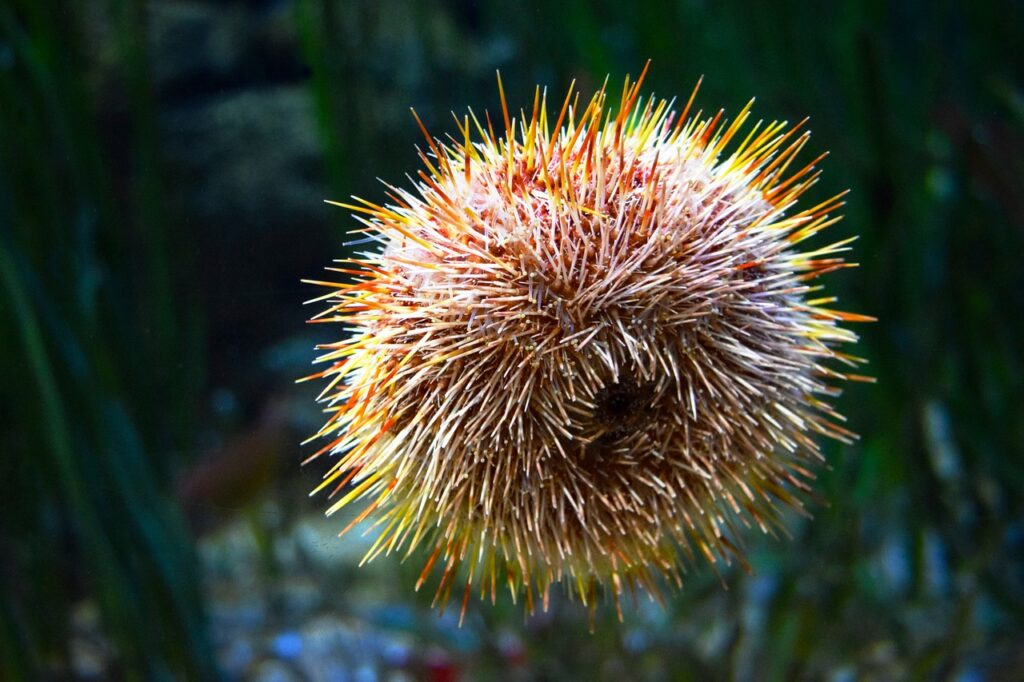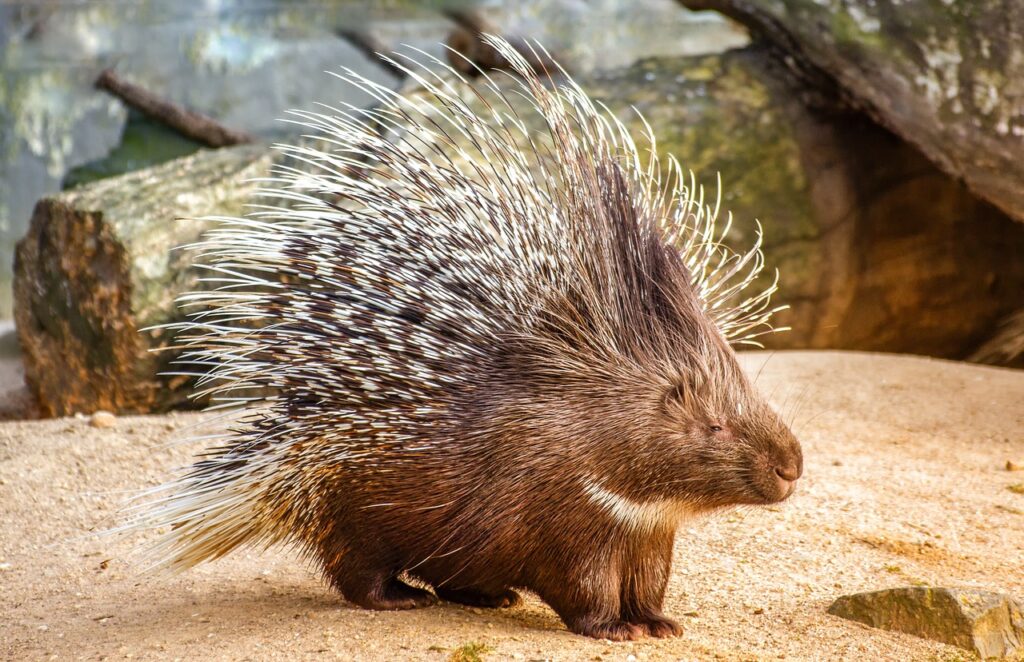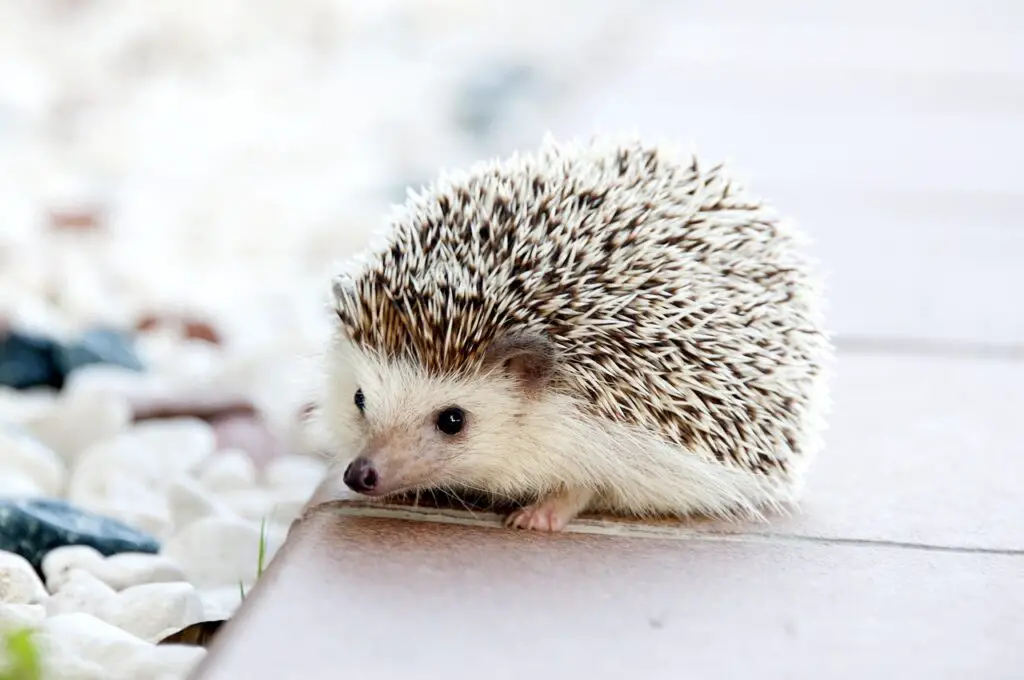Discover the fascinating world of animals akin to hedgehogs in this scientific and informative article. From their spiky quills to their nocturnal habits, these creatures have captivated researchers and animal enthusiasts alike.
Delve into the similarities and distinct characteristics shared by hedgehogs, sea urchins, porcupines, moonrats, solenodons, echidnas, and tenrecs.
Through vivid descriptions and accompanying pictures, gain a deeper understanding and appreciation for the diversity and complexity of these unique creatures that thrive in their respective habitats.
Key Takeaways
- Spiny animals like hedgehogs and sea urchins have spines that serve as a defense mechanism and can be used for protection.
- Quill-bearing mammals like hedgehogs and porcupines have impressive defensive quills that predators avoid due to their barbs, making them difficult to remove.
- Nocturnal climbing mammals like hedgehogs and moonrats are primarily active at night and spend time foraging and climbing trees.
- Unique burrowing creatures like hedgehogs and solenodons are excellent diggers with strong claws, while solenodons have elongated snouts, sharp teeth, and slender bodies for burrowing.
Sea Urchins

Sea urchins are marine animals belonging to the class Echinoidea. They have a spherical or disc-shaped body covered in spines, which serve as their primary form of defense. These spines are highly flexible and can move independently, allowing sea urchins to navigate through their environment and protect themselves from predators.
Additionally, sea urchins possess a unique adaptation known as Aristotle’s lantern, which is a complex chewing apparatus located on their underside. This structure enables them to scrape algae and other food sources from rocks and coral reefs.
Despite their remarkable adaptations, sea urchin populations face several threats. Overfishing, pollution, and habitat destruction are the main factors contributing to their decline. These threats have a significant impact on marine ecosystems, as sea urchins play a vital role in maintaining the health and balance of the underwater environment.
Porcupines

Porcupines are spiky mammals known for their impressive defensive quills. These quills serve as a primary adaptation for survival, deterring potential predators. Porcupines have specialized muscles that allow them to raise and lower their quills as needed, creating a formidable defense mechanism.
When threatened, they can also lash out their quills, embedding them into the predator’s skin and causing pain or injury. The quills are not poisonous, but they have barbs on their tips that make them difficult to remove. This further enhances the porcupine’s ability to defend itself.
Despite their spiky armor, porcupines do have predators such as large carnivores, including wolves, mountain lions, and bears. However, most predators have learned to avoid porcupines, recognizing the danger their quills pose.
Moonrats
Moonrats, also known as greater bamboo rats, are unique mammals that share some physical features with hedgehogs. They belong to the family Spalacidae and are native to Southeast Asia.
Here are some interesting facts about moonrats:
- Unique behaviors and habits of moonrats:
- Moonrats are primarily nocturnal creatures, spending most of their time foraging for food at night.
- They are excellent climbers and spend a significant amount of time in trees.
- Moonrats are known to be solitary animals, rarely seen in groups or pairs.
- They have a unique way of communication through vocalizations and scent marking.
- Moonrats as pets: Pros and cons:
- Pros:
- Moonrats are generally low-maintenance pets and require minimal grooming.
- They are omnivorous and can be fed a variety of foods, making it easier to provide a balanced diet.
- Moonrats are known to be relatively docile and can form a bond with their owners.
- Cons:
- Moonrats have specific habitat requirements, including a large cage with ample hiding places and climbing structures.
- They may have a short lifespan of around 2-3 years.
- Moonrats require regular veterinary check-ups to ensure their health and well-being.
Solenodons
Solenodons, belonging to the family Solenodontidae, are another group of mammals that share physical features with hedgehogs and continue the exploration of animals similar to hedgehogs in the article Animals Like Hedgehogs.
Solenodons are small, nocturnal creatures found in the Caribbean islands, specifically in Cuba and Hispaniola. These unique mammals have several adaptations that allow them to thrive in their environment.
One notable adaptation is their venomous saliva, which they use to immobilize their prey. Solenodons also have elongated snouts, sharp teeth, and long, slender bodies, enabling them to burrow and navigate through dense vegetation.
Unfortunately, solenodons are considered endangered species due to habitat loss and predation by introduced species. Conservation efforts, including habitat protection and captive breeding programs, are being implemented to ensure the survival of these fascinating creatures.
Echidnas
Continuing the exploration of animals similar to hedgehogs in the next subtopic to be discussed is echidnas.
Echidnas, also known as spiny anteaters, are small, egg-laying mammals found in Australia and New Guinea. These unique creatures have several adaptations that allow them to thrive in different habitats:
- Echidnas have sharp spines on their backs, which act as a defense mechanism against predators.
- They have a long, sticky tongue that they use to catch ants and termites, their primary source of food.
- Echidnas are excellent diggers, with strong claws that help them excavate burrows for shelter and protection.
- They have a low metabolic rate, allowing them to conserve energy in harsh environments.
- Echidnas have a unique reproductive strategy, where the female lays a single egg, which she then incubates in a pouch until it hatches. The mother then carries the young echidna, known as a puggle, on her belly for several months.
These adaptations and parenting behaviors contribute to the success of echidnas in their respective habitats.
Tenrecs
Tenrecs, which share similar physical features to hedgehogs, are small mammals found in Madagascar and parts of mainland Africa. These unique creatures have evolved various adaptations to thrive in their diverse habitats. One of their remarkable adaptations is their ability to mimic hedgehogs by curling up into a spiky ball when threatened. Tenrecs also possess a specialized dentition, with sharp incisors and molars, which enables them to feed on a variety of food sources, including insects, worms, and small vertebrates.
Conservation efforts are being made to protect the diverse species of tenrecs, as they face various threats such as habitat loss and hunting. The creation of protected areas and the implementation of sustainable practices are crucial in safeguarding their populations. Additionally, research and monitoring programs are essential for better understanding their ecological needs and promoting their conservation.
Frequently Asked Questions
Are Sea Urchins Related to Hedgehogs?
Sea urchins and hedgehogs share evolutionary similarities as they both belong to the same taxonomic class, Echinoidea. However, they differ in adaptations and habitats. Sea urchins have spines for protection in marine environments, while hedgehogs have spines for defense on land.
What Is the Difference Between a Porcupine and a Hedgehog?
Porcupines and hedgehogs are both spiny animals, but they have several differences. Porcupines are larger and have longer quills that detach easily, while hedgehogs are smaller and have shorter, fixed spines. Hedgehogs are more closely related to echidnas than to porcupines.
How Do Moonrats Differ From Hedgehogs?
Moonrats and hedgehogs have some similarities, such as spines and similar physical features, but they also have differences. Moonrats, unlike hedgehogs, belong to a different family and have a different habitat and diet.
What Unique Characteristics Do Solenodons Have Compared to Hedgehogs?
Solenodons, unlike hedgehogs, have elongated snouts, venomous saliva, and specialized teeth for feeding on insects. They are endangered due to habitat loss, predation by introduced species, and low reproductive rates.
Can Tenrecs Be Kept as Pets Like Hedgehogs?
Tenrecs, like hedgehogs, can be kept as exotic pets. However, they differ from hedgehogs in terms of care and temperament. Tenrecs require a specific diet and habitat, and their temperament can vary, with some being more docile than others.

